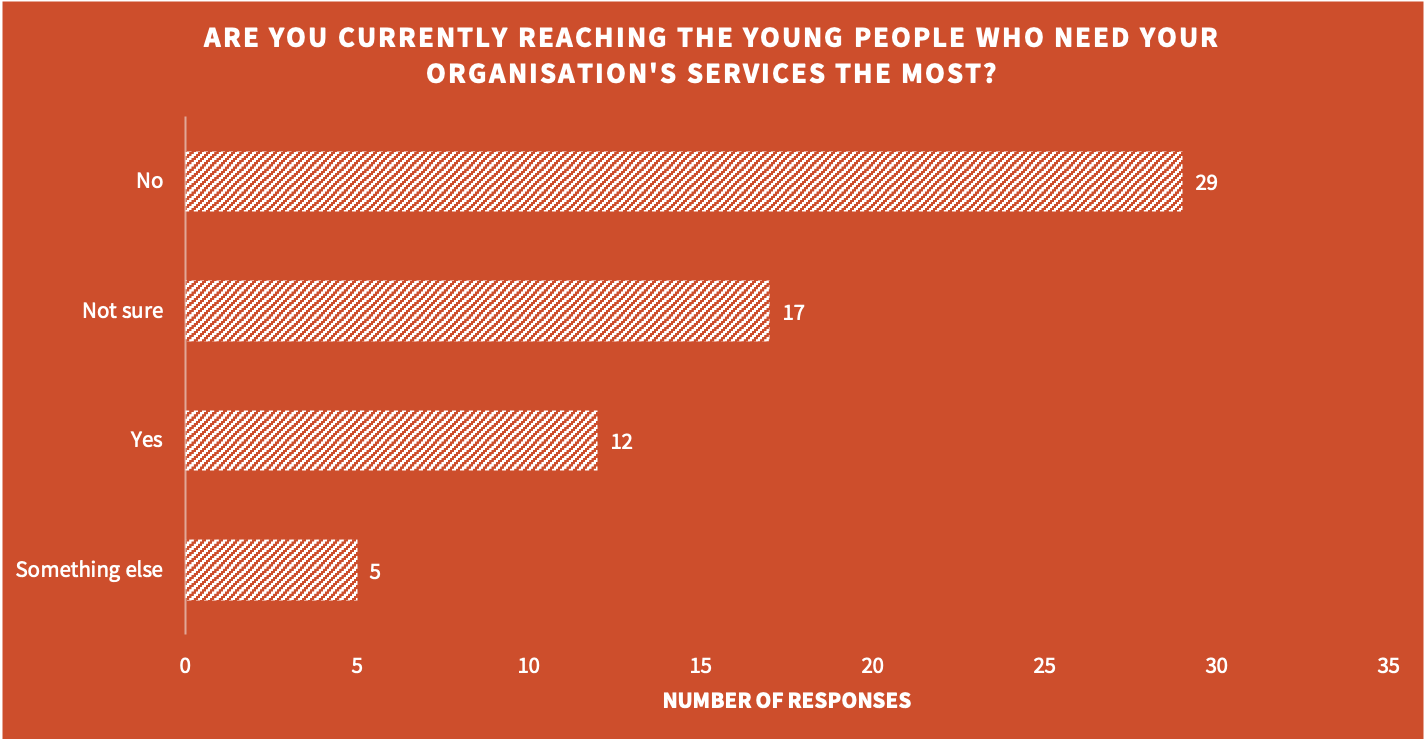Lessons from the Listening Fund (Part 5): Listening during COVID-19
2020-06-19
Over the past two years, the Centre for Youth Impact has been working with the funders and youth organisations involved in the Listening Fund, a collaborative effort to support organisations to listen and respond to young people – and make this the norm. The Centre is evaluating both the England and Scotland Fund, and this week is reporting on the findings from England. This blog by Jo Hickman Dunne and Catherine Mitchell, reflects on the impacts of social distancing on the youth sector and ways in which active listening is still happening.
This is part of a series of blogs exploring the findings from the project. The rest of the series will appear here.
The impact of COVID-19 on Listening Fund partners
Many social sector organisations are facing extreme challenges in light of the coronavirus pandemic. Both in the short and long-term, young people are some of the most adversely affected, and many youth sector organisations are being required to dig deep into their financial, human and technological resources to ride this wave. They are fighting to support young people in a time of great uncertainty. The Listening Fund is thinking of ways that it too can support work on youth voice and empowerment, at a time when it feels most relevant, but also most at risk. You can read about some of the Fund’s possible future plans here.
Listening in online youth work
As part of our evaluation, we wanted to capture the ways that listening has been shaped by COVID-19 to create some context for the ongoing evaluation and shape our organisational support going forward. At the mid-point self-assessment (April 2020) Listening Fund Scotland partners were asked about the impact of the COVID-19 pandemic on their listening practices and whether a specific focus on listening may have supported them to respond to social distancing measures effectively.
Unsurprisingly, partners have reported an increased use of technology to support listening practices. This includes:
- Purchasing new equipment (laptops and smart phones) for young people to combat digital poverty;
- Relying more heavily on communication platforms such as Zoom, Facebook and WhatsApp to support remote listening; and
- Adapting data collection platforms to help to identify which young people are absent from listening practices as a consequence of COVID-19.
Some have also reflected on this situation as an opportunity to improve the way they use digital communication platforms to support their listening practices. For one partner, “we had identified social media as an aspect of listening which we need to improve but lacked motivation/capacity. The pandemic has made this a priority. We have updated our social media strategy, project workers are upskilling and time is being dedicated to doing posts and engaging.” Similarly, another commented that they are “using social media platforms more creatively and effectively to engage with our young people”.
In being forced to develop new ways of working, some partners have also put into practice skills and knowledge gained through the Listening Fund to consult with young people on the development and functioning of online youth work. Partners have reported more actively listening to young people to gain feedback on their digital delivery, with one partner developing “a short Survey Monkey questionnaire to gather anonymous feedback from young people who have used our new service”.
The Listening Fund also commissioned Inspire Chilli to undertake research exploring the role of listening in adapting to COVID-19 amongst partners. The full report Strength in Solidarity: How listening practices helped youth organisations to respond to the COVID-19 crisis, includes findings on how listening has increased, how it has shaped services, and how funders can support these practices. From this research we feel there are two important takeaways that build on what partners reported above.
Firstly, partners found that through building their capacity to listen they were much more confident in the way they were adapting their delivery, and felt they were able to make effective decisions in line with young people’s different needs. Secondly, increased attentiveness to listening, or ‘listening mindfulness’, meant that organisations could:
- Invest in ongoing listening practices through a person-centred culture;
- Develop processes to codify and respond to what was heard; and
- Where possible, enable young people to have more power to lead activity areas.
Crucially, the report found that listening needs to pre-exist at a certain level of capability for it to sustain and adapt itself positively during crisis, with it suggested that “investing in the capacity of staff also proved important to help organisations adjust to demands from changing support environments and increased service personalisation”.
#JustOneQuestion: a focus on listening
In response to COVID-19, we are making use of our existing survey platform to share #justonequestion on a weekly basis, which asks youth practitioners about their remote youth work delivery. The self-assessment responses prompted us to this about how well organisations are able to actively listen through digital platforms (that is, where young people are given tangible opportunities to shape youth provision). Consequently, this week our question has been:
“How effective are the mechanisms you have in place for young people to influence the content and delivery of your online provision?”

We received answers from 52 respondents (who could each select one option). The majority (62%) felt that their current mechanisms are slightly or somewhat effective, with higher confidence from 27% who felt that they have very or extremely effective mechanisms in place. Equivalent, smaller numbers felt that their mechanisms are either not at all effective (6%), or that they do not have mechanisms in place for young people to influence online provision (6%).
There are lots of factors to consider here. What forms of listening are organisations currently undertaking with young people? (See the Listening Fund diagnostic for different ways in which this can be broken down). Has a shift to mostly online provision increased or decreased the effectiveness of existing listening mechanisms? Is this effectiveness consistent across an organisation, or unique to particular services? Does effective listening throughout this period of the pandemic rely on pre-existing mechanisms and capacity for listening to take place?
Online youth work is likely to continue to play a role in the medium- to long-term, and therefore providing space for young people to input into the design and format of delivery is important to ensure that services are meeting their needs. It is incredibly positive that nearly 30% of survey respondents feel they have a highly effective mechanism in place, whilst the 12% with ineffective or no mechanisms demonstrates the challenge of this task. The research from Inspire Chilli shows that Listening Fund partners - where listening capacity has been consciously prioritised - have also come up against limitations in how they involve young people, particularly when trying to function under conditions of “operational survival”. However, there were some clear examples of the way young people have been able to impact on service delivery during the pandemic. These include[1]:
- Participating in weekly and monthly group meetings to discuss how the organisation could improve its work;
- Being asked for recommendations on which digital platform the organisation should use
- Being on a steering group or youth advisor group to choose questions for a survey or evaluation approach;
- Having roles to work as part of the staff team or as peer mentors;
- Participating at board level to advise trustees on action at the start of the pandemic, and running a session with the senior management team based on an agenda determined by young people;
- Offering feedback on service experiences through different communication channels and spaces highly tailored to young people’s personal interests and preferences;
- Making personal requests for services or equipment, ranging from ideas on specific content for group sessions, or simply asking for a laptop; and
- Taking over an organisation’s Instagram account for a period of time to shape its communications, or writing blogs to influence other young people.
The ways that partners have been able to listen to young people during COVID-19 present a range of approaches, both adaptations from existing mechanisms and new and creative approaches to listening. The report showed that young people also needed organisations to be aware of how their channels for being heard have had to adapt online, for example in becoming more confident in speaking up in a virtual space. We think this is a really important point and a valuable one to end on - young people need organisations to adopt a personalised approach to listening, shaped by individual preferences for different communication platforms.
More detail about the Centre for Youth Impact evaluation findings can be found in the full learning report, and in the accompanying case study report that takes an in-depth look at six partners’ projects.
[1] Taken from the final Inspire Chilli research report: Falconer, C. (2020). Strength in Solidarity: How listening practices helped youth organisations to respond to the COVID-19 crisis. Inspire Chilli.
